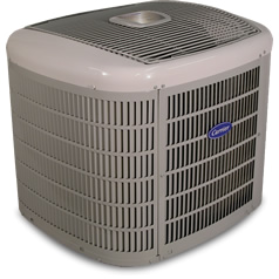Glossary
Air Conditioning and Heating Terms
C
Carbon Dioxide (CO2)
A colorless, odorless noncombustible gas with the formula CO2 that is present in the atmosphere. It is formed by the combustion of carbon and carbon compounds (such as fossil fuels and biomass), by respiration, which is a slow combustion in animals and plants, and by the gradual oxidation of organic matter in the soil.
Carbon Monoxide (CO)
A colorless, odorless but poisonous combustible gas with the formula CO. Carbon monoxide is produced in the incomplete combustion of carbon and carbon compounds such as fossil fuels (i.e. coal, petroleum) and their products (e.g. liquefied petroleum gas, gasoline), and biomass.
Ceiling Plenum
Space below the flooring and above the suspended ceiling that accommodates the mechanical and electrical equipment and that is used as part of the air distribution system. The space is kept under negative pressure.
Central Air Conditioning
A device used to control temperature and humidity of the air.
Commercial Air Handling Unit (Central AHU)
This is the same as an Air Handling Unit, but serves more than one area.
Central Heating System
In HVAC a system where heat is supplied to areas of a building from a single appliance through a network of ducts or pipes.
CFM Cubic feet per minute
HVAC term for the amount of air, in cubic feet, that flows through a given space in one minute. 1 CFM equals approximately 2 liters per second (l/s).
Chimney
A masonry or metal stack that creates a draft to bring air to a fire and to carry the gaseous byproducts of combustion safely away.
Chimney Effect
The tendency of heated air or gas to rise in a duct or other vertical passage, such as in a chimney, small enclosure, or building, due to its lower density compared to the surrounding air or gas.
Combination Foundations
Buildings constructed with more than one foundation type; e.g., basement/crawlspace or basement/slab-on-grade.
Combustion
The process of burning; the oxidation of a material by applying heat, which unites oxygen with a material or fuel.
Combustion Air
Air that provides the necessary oxygen for complete, clean combustion and maximum heating value.
Combustion Chamber
Any wholly or partially enclosed space in which combustion takes place.
Combustion Gases
The gaseous byproducts of the combustion of a fuel.
Compressor
A device used to compress air for mechanical or electrical power production, and in air conditioners, heat pumps, and refrigerators to pressurize the refrigerant and enabling it to flow through the system.
Condensing Unit
The device in an air conditioner or heat pump in which the refrigerant condenses from a gas to a liquid when it is depressurized or cooled.

Condenser Coil
The device in an air conditioner or heat pump through which the refrigerant is circulated and releases heat to the surroundings when a fan blows outside air over the coils. This will return the hot vapor that entered the coil into a hot liquid upon exiting the coil.
Condensing Unit
The component of a central air conditioner that is designed to remove heat absorbed by the refrigerant and transfer it outside the conditioned space.
Conditioned Air
Air that has been heated, cooled, humidified, or dehumidified to maintain an interior space within the “comfort zone.” (Sometimes referred to as “tempered” air.)
Conditioned Space
The interior space of a building that is heated or cooled.
Constant Air Volume Systems
Air handling system that provides a constant air flow while varying the temperature to meet heating and cooling needs.
Cooling Capacity
The quantity of heat that a cooling appliance is capable of removing from a room in one hour.
Cooling Degree Day
A value used to estimate interior air cooling requirements (load) calculated as the number of degrees per day (over a specified period) that the daily average temperature is above 65 degrees Fahrenheit (or some other, specified base temperature). The daily average temperature is the mean of the maximum and minimum temperatures recorded for a specific location for a 24 hour period.
